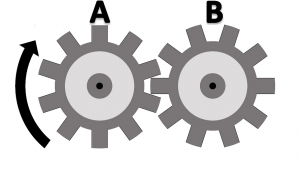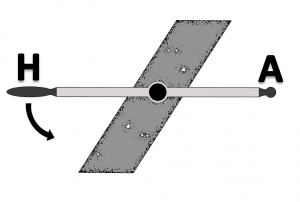On this page you will find some introductory information regarding some of the assessments utilised by PSI. There are various hints and tips available and also a range of sample questions which have been provided to familiarise you with the types of questions in PSI assessments.
In addition to the questions below, we have full length aptitude assessments available for purchase here.
- Personality Questionnaire
- Natural Preference Questionnaire
- Abilities Assessments: Hints and Tips
- Sample Questions – Numerical Reasoning
- Sample Questions – Critical Thinking
- Sample Questions – Verbal Reasoning
- Sample Questions – Mechanical Reasoning
- Answers to Sample Questions
Personality Questionnaire
The most commonly used personality instrument applied is a well known, well researched and valid tool that is used to assess personality traits that are relevant to the style with which someone will go about tackling their personal and working lives.
The profile gives an idea of how an individual likes doing things, their natural style, the easiest way for them to learn, how best to teach them, how they might prefer to be managed and the mix of opportunities that might be important for them both now, as well as into the future.
The personality questionnaire will ask the participant to read a series of statements, decide how they feel about each, then mark their answer, TRUE or FALSE, on the answer form. It is important to note that there are no “right” or “wrong” answers to the questions. The most important element to undertaking this assessment is that the answers are honest. The questionnaire contains validity scales that will identify whether an individual is either intentionally or unintentionally overestimating themselves, or painting themselves in a better light than may actually be the case.
The questionnaire contains 434 items and usually takes between 45-60 minutes to complete but it isn’t timed. People who take longer than this may be thinking too much about their responses, or may be trying to gear answers towards what they perceive others may be looking for but this isn’t required.
Natural Preference Questionnaire
This short, untimed questionnaire is designed to gather more insight into a candidate’s personal working style and preferences. The questions are not designed specifically for any particular role, but the insights can be particularly beneficial during transition into a new position.
Abilities Assessments – Hints and Tips
- Timed tests require the participant to work quickly through the questions.
- As the tests are completed online, it is useful to have a pen and paper handy to jot down any workings.
- Attempt as many questions as possible – remember, there could be some easier questions toward the end of the test so don’t waste too much time on difficult ones at the beginning.
- Don’t spend too much time on any one question. If a question seems too difficult or time-consuming, make a guess and move on.
- There is no penalty for getting a question wrong, so if you don’t know the answer, make a guess!
- If you finish early, take the time to go back and check your answers.
- Try not to leave any questions unanswered or blank – as there is no penalty for guessing you at least have a chance of getting the question correct if you guess the answer rather than leaving it blank.
- You may find that you are better at some types of questions (for example the verbal reasoning items) and not others (for example the numerical reasoning items). Don’t worry; it is quite normal for people to have strength in one area over another, which is why a variety of ability tests are applied. Generally, it will be your overall performance on the tests that counts. So if you don’t do well on one test, you will probably make up for it with your score on another.
Sample Questions – Numerical Reasoning
Question 1.
Find the missing number in the following sequence:
75 78 74 ? 73 76 72
A: 78 B: 79 C: 76 D: 77 E: 75
Question 2.
The numbers in the grid form a pattern. Which number should replace the question mark?
Note: the * denotes a hidden number, you are to find which number replaces the question mark only.
|
7 |
14 | ? |
|
14 |
21 |
28 |
| 21 | * |
35 |
A: 21 B: 28 C: 14 D: 35 E: 7
Question 3.
Elise has a number of books. When she arranges them in groups of four, she has one left. If she arranges them in groups of three, again she has one left over. If the books are set out in pairs, the result is the same: there is one left over. There are no more than fifteen books altogether.
What is the exact number of books that Elise has?
A: 9 B: 13 C: 11 D: 14 E: 15
Sample Questions – Critical Thinking
Question 4.
Belief: Julie believes that the behaviour of one of her students Kayla, disrupts the rest of her class.
New Information: Julie notices that the class completes 5 more pages than normal on a day that Kayla is absent.
A. Reinforces belief B. Contradicts belief C. No influence on belief
Question 5.
Belief: Evan believes that the Oak tree in his backyard is the oldest tree on his property.
New information: Many of the tree’s on Evan’s property appear to be dying and the Oak Tree is looking the worst.
A. Reinforces belief B. Contradicts belief C. No influence on belief
Question 6.
Belief: John believes that the quantity of finger food that he has ordered for his function will be sufficient to last the entire day.
New Information: John notices that approximately 75% of the finger food has been consumed within the first 30 minutes of the event.
A. Reinforces belief B. Contradicts belief C. No influence on belief
Sample Questions – Verbal Reasoning
Question 7.
All of the words below are alike in some way.
elated happy bubbly joyful
Which of the following options could also be added to this group?
A: suspicious B: jubilant C: reluctant D: sorrowful E: relief
Question 8.
CLASSROOM is to TEACHER as COURT is to:
A: jury B: landscaper C: house D: judge E: prisoner
Question 9.
Find the two statements that together prove that:
Rita has red hair
1: Rita has long hair.
2: Rachael has red hair.
3: Rachael is ten years old.
4: Rita’s hair is the same colour as Rachael’s.
A: 1 & 2 B: 1 & 4 C: 1 & 5 D: 2 & 3 E: 2 & 4
Sample Questions – Mechanical Reasoning
Question 10.
When gear A turns clockwise, as indicated by the arrow, gear B will:

A: turn anticlockwise B: turn clockwise C: not move D: turn back and forth
Question 11.
When the handle (H) is pulled down to the right, point A will:

A: move down, to the left B: move down, to the right C: move up, to the left D: move up, to the right
Question 12.
As demonstrated by the diagram, if 7kg of force is applied to the beam in which direction will the 7kg weight move?
A: move up, to the right B: move down, to the left C: it will not move D: the beam will break
Numerical Reasoning – Sample Question Answers
Question 1: Answer D
Question 2: Answer A
Question 3: Answer B
Critical Thinking – Sample Question Answers
Question 4: Answer A
Question 5: Answer C
Question 6: Answer B
Verbal Reasoning – Sample Question Answers
Question 7: Answer B
Question 8: Answer D
Question 9: Answer E
Mechanical Reasoning – Sample Question Answers
Question 10: Answer A
Question 11: Answer C
Question 12: Answer C

